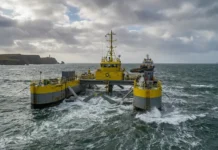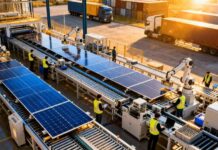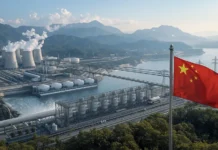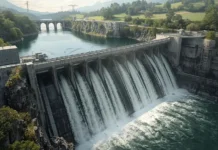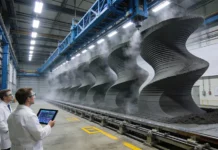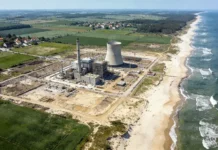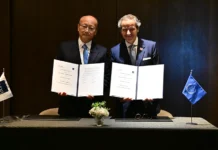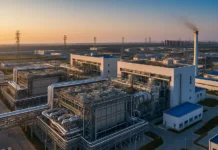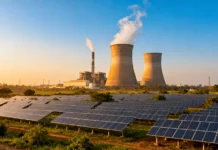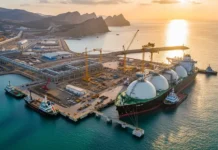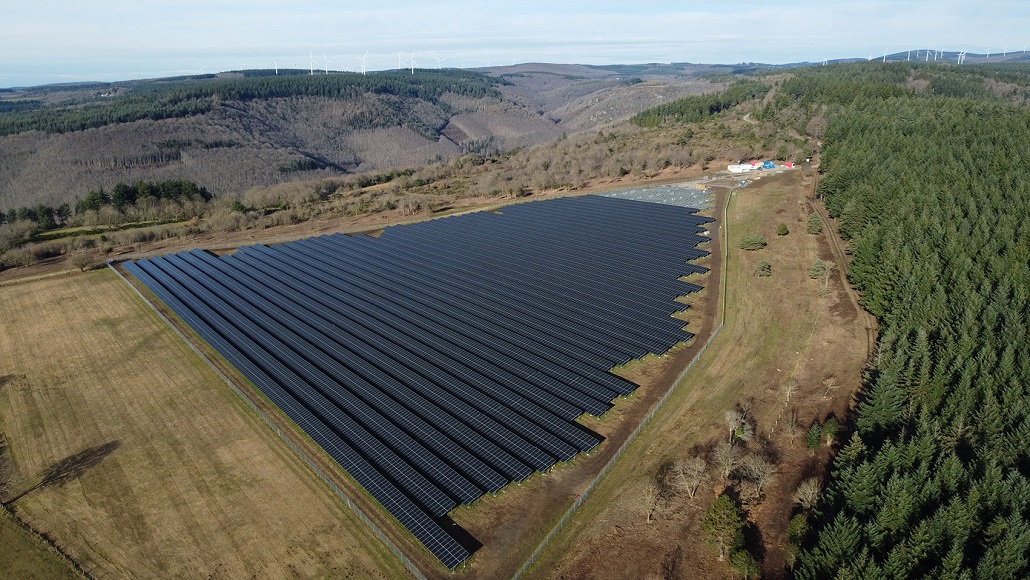After more than a decade in development, the La Gineste solar farm was officially inaugurated today in the French municipality of La Tourette-Cabardès, Aude. Local and regional officials, including Mayor Jean-Claude Pech, Alain COSTE, Regional Councillor Occitanie/Pyrénées-
Equipped with more than 15,200 solar modules, the plant will generate enough renewable electricity to power approximately 5,500 residents annually, while avoiding the release of 2,850 tonnes of CO₂ into the atmosphere each year. In March, Velto Renewables—an independent green energy producer—acquired a 50% stake in the project, reinforcing its commitment to sustainable regional energy development.
A Farm-Powered Solar Park
La Gineste stands out for its synergy between clean energy generation and agriculture. Developed by Q ENERGY in close collaboration with the landowner and local municipality since 2011, the site was originally identified not for its high agronomic value, but for its strategic position within a broader agricultural system.
Though the land had been left fallow for more than 65 years and was ineligible for agricultural subsidies, it has now been revitalized. A young local farmer uses the land for livestock grazing, providing both a secure pasture and a stable source of income. This practice provides natural site maintenance, supports biodiversity, and improves animal welfare. The partial shade from solar panels helps protect the flock from extreme weather, contributing to farm resilience.
“La Gineste is much more than a solar farm—it’s part of a real agricultural project,” said Laurent Duwiquet, Regional Solar Manager at Q ENERGY France. “It strengthens the long-term viability of a local farm and reflects the shared vision of the farmer, local officials, and our team.”
For Velto Renewables, the La Gineste project is part of a portfolio of five renewable assets in France, three of which are in the Occitanie region. This reflects the group’s long-term commitment. This project represents much more than just a clean energy production site: it is a model of sustainable land use, designed to generate lasting economic and social benefits at the local level. “La Gineste is part of the group’s European, national, and local strategy, serving the energy transition and sustainable regional development. We are continuing our efforts in development and construction to operate the plant in close connection with the region for decades to come,” said Lionel Daras, Portfolio Manager France, at the inauguration.
Environmental considerations were at the heart of the project’s design. In line with the “avoid, reduce, compensate” principle, the site was carefully selected to avoid impacting moorland, thickets, and woodlands. Native hedgerows have been planted to help the site blend into the landscape, while wildlife corridors and educational signage near public trails aim to support biodiversity and community engagement.
A Long Road to Completion
The inauguration marks the end of a 14-year journey—an unusually long timeline for a photovoltaic project. Delays stemmed partly from the late commissioning of the regional electrical substation in Conques-sur-Orbiel, which was essential for the plant’s grid connection.
Global events also took their toll. The COVID-19 pandemic and the war in Ukraine disrupted supply chains and drove up material costs, threatening the project’s viability. Although it was selected in a 2022 call for tenders by France’s Commission de RĂ©gulation de l’Énergie (CRE) under historically low tariffs, inflation rendered those terms unsustainable. It wasn’t until March 2024—when a new, more viable tariff was secured through another CRE tender—that construction could finally proceed.
“Overcoming these hurdles required more than determination,” Duwiquet noted. “It was only possible because of a deep, trusting partnership between the landowner, the municipality, and our team. We all believed in the value of what we were building—both for the environment and for the community.”



